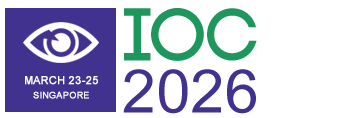Title : Overnight orthokeratology combined with atropine 0.01% in Chinese pre-adolescent myopes
Abstract:
Backgroud: Orthokeratology has been proved to temporarily alter the equivalent sphere. On condition that orthokeratology combined with atropine 0.01% +brinzolamide tarding myopia deserves attention.
Purpose: A comparative study was performed to evaluate the effectiveness of orthokeratology alone, or orthokeratology combined with atropine 0.01% and brinzolamide Chinese school-age samples.
Methods: Myopia advance was examined in 158 participants (316 eyes) aged 9 to 14 years ( mean ages 11.2 ±1.5 years, -0.5 to -3.00DS with astigmatism less than -1.25DC). The subjects are randomly assigned to orthokeratology+atropine 0.01%+brinzolamede orthokeratology group (n=63).The primary outcomes, which covered cycloplegic refraction, ocular biometry and topography measurements, were assessed every 6 months. The study was done in 36 months . Data were analyzed using ANOVA, repeated measured ANOVA and a chi-square tests.
Results: 141 subjects(83 in orthokeratology+ Atropine 0.01%+brinzolamiderthokeratology group) completed the three-year study. Over 3 years, axial length elongation in the orthokeratology + Atropine 0.01% +brinzolamide orthokeratology group,respectively, were 0.21 ± 0.12 mm, 0.32 ± 0.16 mm; and the spherical equivalent refractive (SER) error changes in the orthokeratology group and the orthokeratology+ atropine 0.01%+brinzolamide group , were -0.62±0.61 D, -0.43±0.66 D,respectively.
Conclusions: This study shows: A) that measure of intervention of myopia are one factor of influence on myopia progression; B) that compared with orthokeratology group, myopia progression was found to be more retarded by orthokeratology+atropine 0.01%+brinzolamide in Chinese school-children.
Keywords: Myopia; Child; Clinical trial; orthokeratology ; atropine; Brinzolamide



